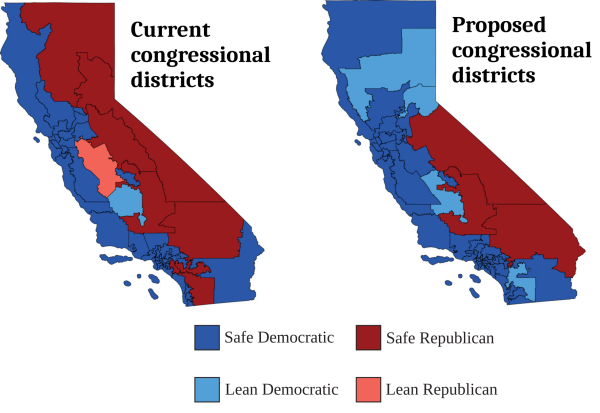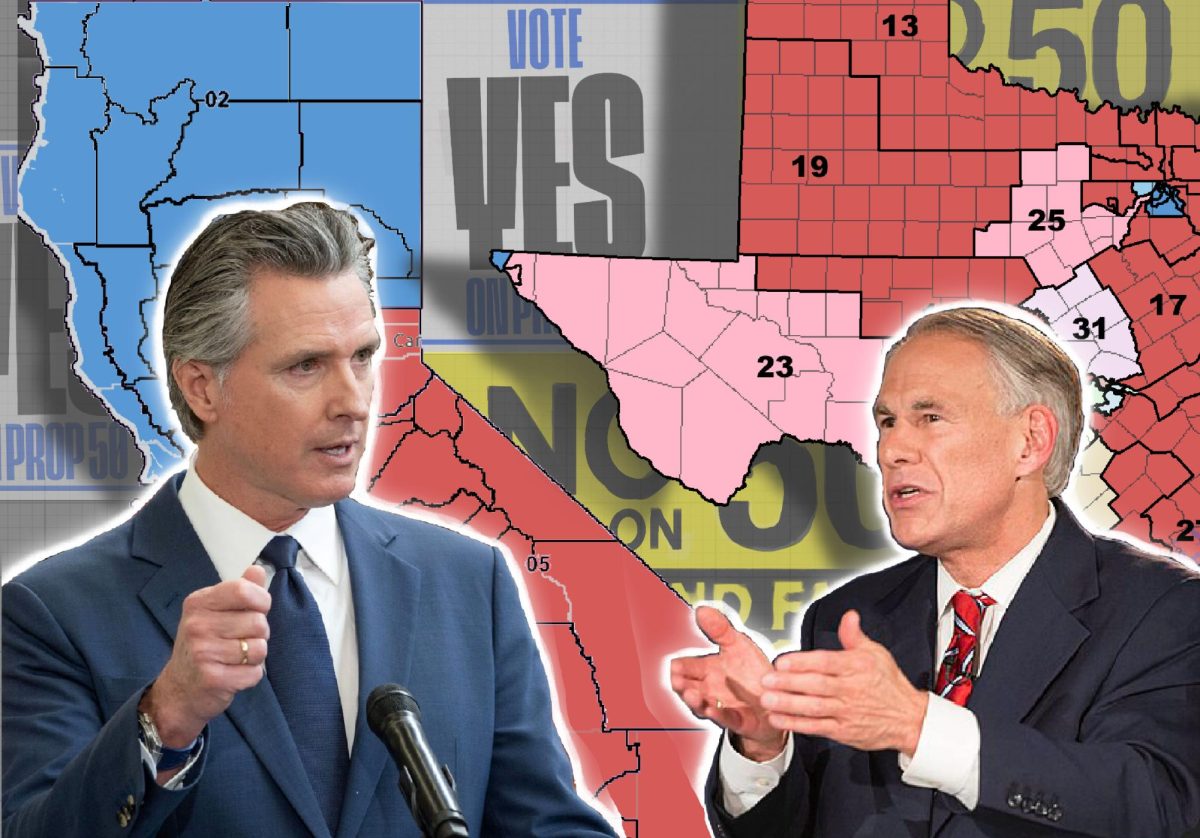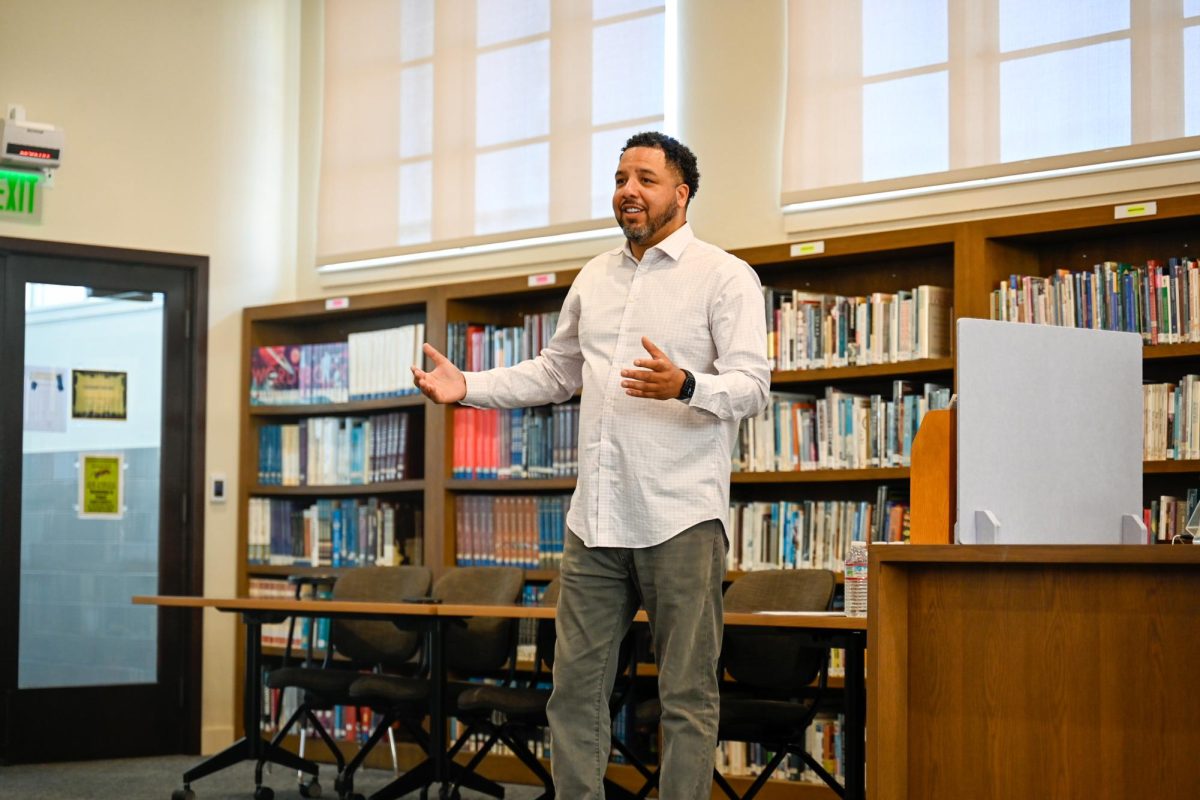California voters will decide on Proposition 50, California’s state plan to redraw congressional election maps, on Nov. 4.
This comes after Gov. Gavin Newsom signed the proposition on Aug. 21. Supporters of Prop. 50 have raised over $126 million compared to the $75 million collected by opposition through Sept. 28. Raising money usually funds advertising, outreach and campaigns to persuade voters, and the side with more resources often has a stronger ability to shape public opinion.
Redistricting is the redrawing of state district lines that determine how our House of Representatives legislators are elected, typically done after the Census results every 10 years to keep district populations balanced for fair representation. Newsom’s proposal will redefine districts in the middle of the typical decade-long period and is a direct response to Texas’s redistricting efforts to add five Republican seats.
“The political state of our country is becoming more polarized because [Newsom’s] actions felt like a response to Governor Abbott of Texas and, in general, the more right wing movements throughout our country,” sophomore Elaine Huang said. “Newsom has this reputation in California where he is very anti-Trump, but at the same time, he still has some very conservative values, so it was an interesting moment for Californians.”
In California, a citizen-led group separate from politicians called an independent citizen commission holds public meetings to gather opinions before drafting and voting on a new map. Prop. 50 represents a distinct departure from the established process, which was designed to remove partisan influence from redistricting decisions.

“In the state of California, you have to apply to be on the redistricting committee, and it’s a year-long process,” AP Government and Civics teacher Carol Green said. “They’re looking for political diversity, so we can only have so many registered Republicans and so many registered Democrats, and the rest have to be registered either independent or third party.”
Individual states have the power to determine their legislative processes for redistricting. Thus, some legislators modify redistricting for their own goals, as demonstrated in Newsom and Abbott’s leveraging of districts to gain House seats. The term gerrymandering describes the improper usage of the process to benefit a certain class or political party.
“There is a federal check, but that check doesn’t deal with political gerrymandering,” Green said. “The Constitution leaves elections to the states, so for the most part, gerrymandering is completely legal and mostly depends on what kinds of rules are set up per state. If the people of the state want to change that, they’ve got to change who their elected officials are.”
Newsom’s plan will require a special election in November, where California voters will decide whether to approve the new maps. If passed, the redistricting would take effect for the 2026 midterm elections, prompting states to rush the process to potentially shift the balance of power in Congress.
Ballot measure contribution totals as of Sept. 28 and a poll by Emerson Polling on Sept. 19 indicate California citizens are in favor of passing Prop. 50. Senior Timothy Deng, president of Civic Discourse Club, expressed concerns about how continuing the conflict may affect the entire country.
“The broader ethical question we have to consider is really whether this tactic is one, legitimate and two, if it’s going to be effective,” Timothy said. “It’s really a fighting fire with fire situation, and if democracy is under threat in other states, are we going to attempt to fight that by putting democracy under threat in our own state? I worry that adopting these undemocratic tactics is only going to further degrade American political culture.”


















![“[Building nerf blasters] became this outlet of creativity for me that hasn't been matched by anything else. The process [of] making a build complete to your desire is such a painstakingly difficult process, but I've had to learn from [the skills needed from] soldering to proper painting. There's so many different options for everything, if you think about it, it exists. The best part is [that] if it doesn't exist, you can build it yourself," Ishaan Parate said.](https://harkeraquila.com/wp-content/uploads/2022/08/DSC_8149-900x604.jpg)




![“When I came into high school, I was ready to be a follower. But DECA was a game changer for me. It helped me overcome my fear of public speaking, and it's played such a major role in who I've become today. To be able to successfully lead a chapter of 150 students, an officer team and be one of the upperclassmen I once really admired is something I'm [really] proud of,” Anvitha Tummala ('21) said.](https://harkeraquila.com/wp-content/uploads/2021/07/Screen-Shot-2021-07-25-at-9.50.05-AM-900x594.png)







![“I think getting up in the morning and having a sense of purpose [is exciting]. I think without a certain amount of drive, life is kind of obsolete and mundane, and I think having that every single day is what makes each day unique and kind of makes life exciting,” Neymika Jain (12) said.](https://harkeraquila.com/wp-content/uploads/2017/06/Screen-Shot-2017-06-03-at-4.54.16-PM.png)








![“My slogan is ‘slow feet, don’t eat, and I’m hungry.’ You need to run fast to get where you are–you aren't going to get those championships if you aren't fast,” Angel Cervantes (12) said. “I want to do well in school on my tests and in track and win championships for my team. I live by that, [and] I can do that anywhere: in the classroom or on the field.”](https://harkeraquila.com/wp-content/uploads/2018/06/DSC5146-900x601.jpg)
![“[Volleyball has] taught me how to fall correctly, and another thing it taught is that you don’t have to be the best at something to be good at it. If you just hit the ball in a smart way, then it still scores points and you’re good at it. You could be a background player and still make a much bigger impact on the team than you would think,” Anya Gert (’20) said.](https://harkeraquila.com/wp-content/uploads/2020/06/AnnaGert_JinTuan_HoHPhotoEdited-600x900.jpeg)

![“I'm not nearly there yet, but [my confidence has] definitely been getting better since I was pretty shy and timid coming into Harker my freshman year. I know that there's a lot of people that are really confident in what they do, and I really admire them. Everyone's so driven and that has really pushed me to kind of try to find my own place in high school and be more confident,” Alyssa Huang (’20) said.](https://harkeraquila.com/wp-content/uploads/2020/06/AlyssaHuang_EmilyChen_HoHPhoto-900x749.jpeg)











